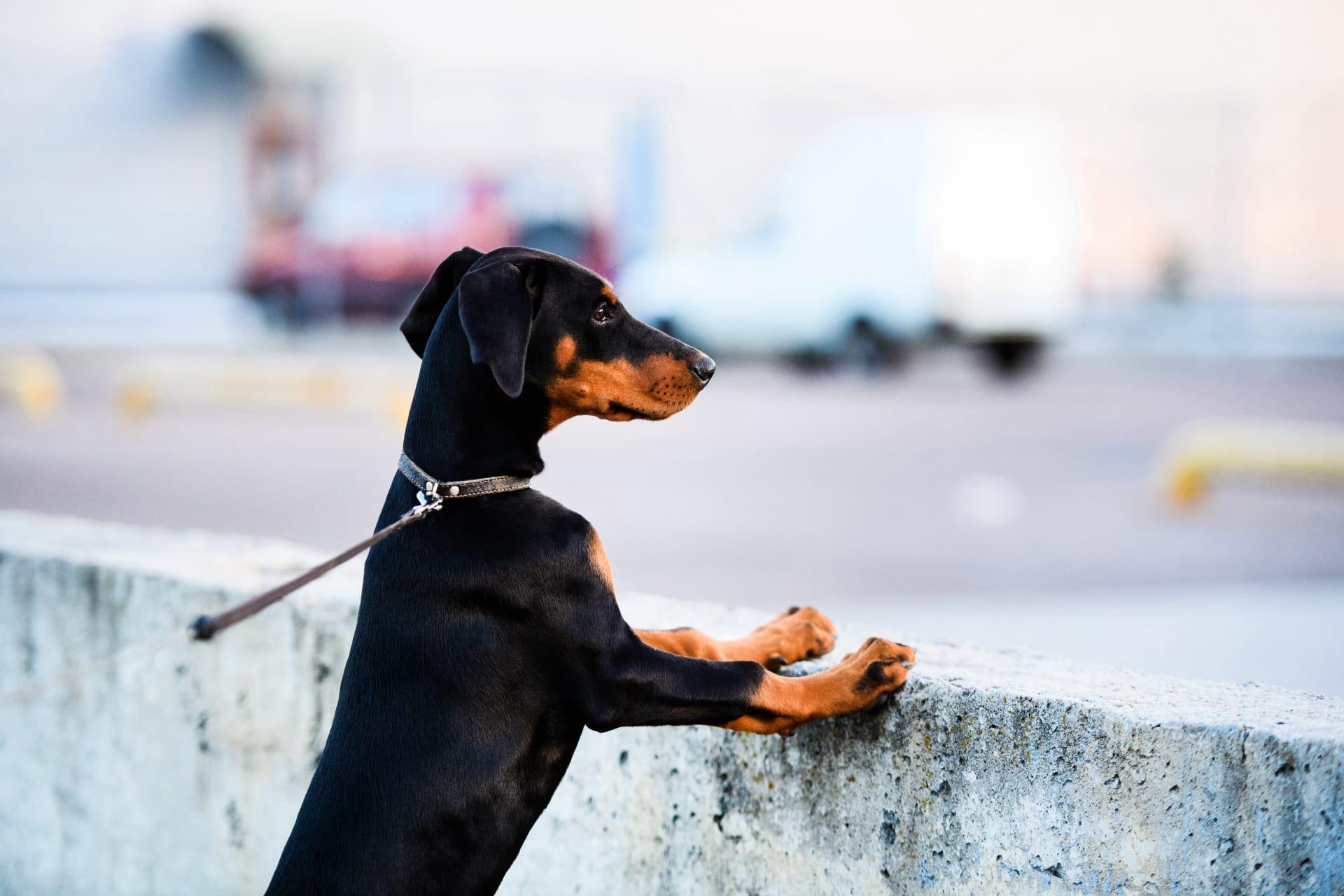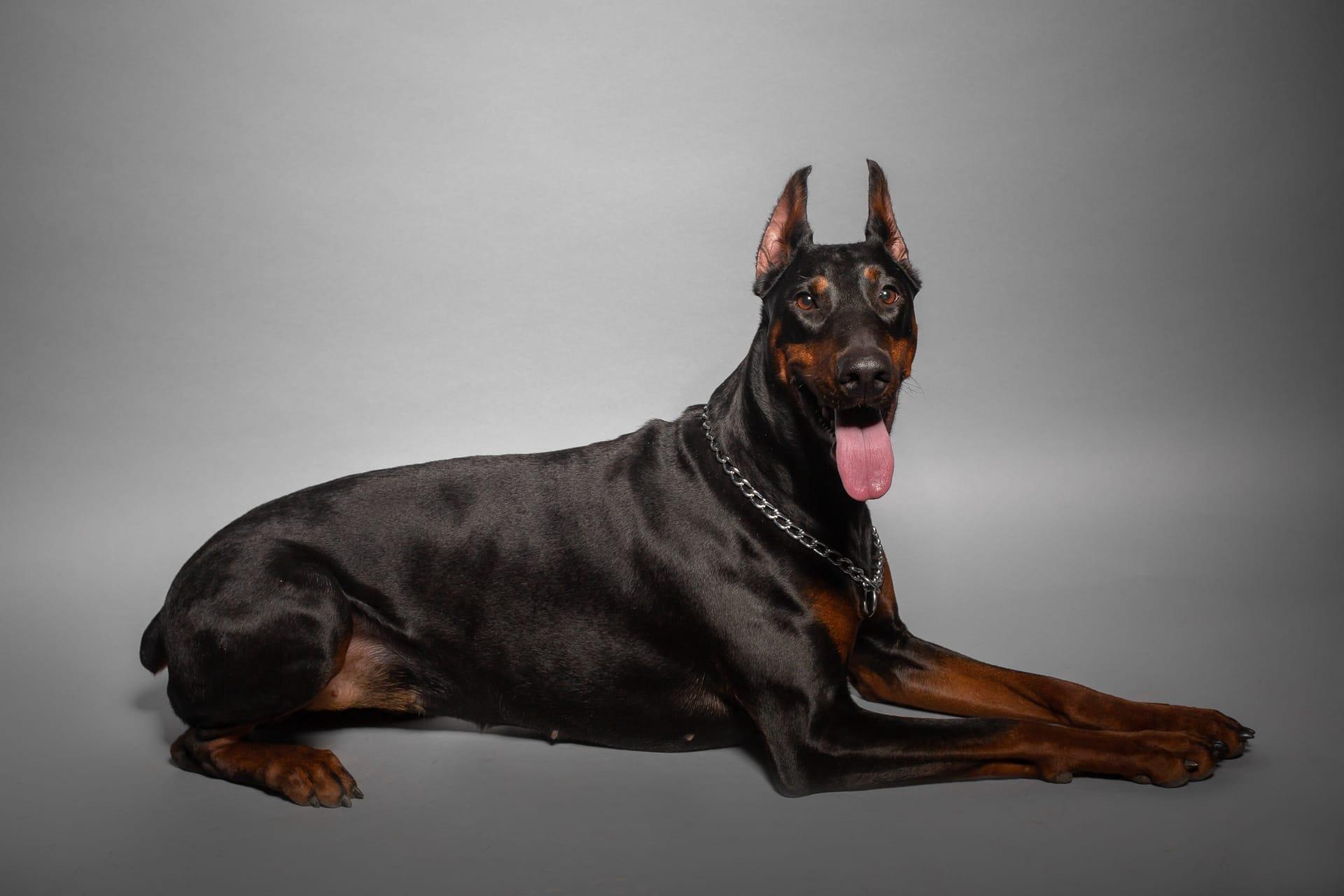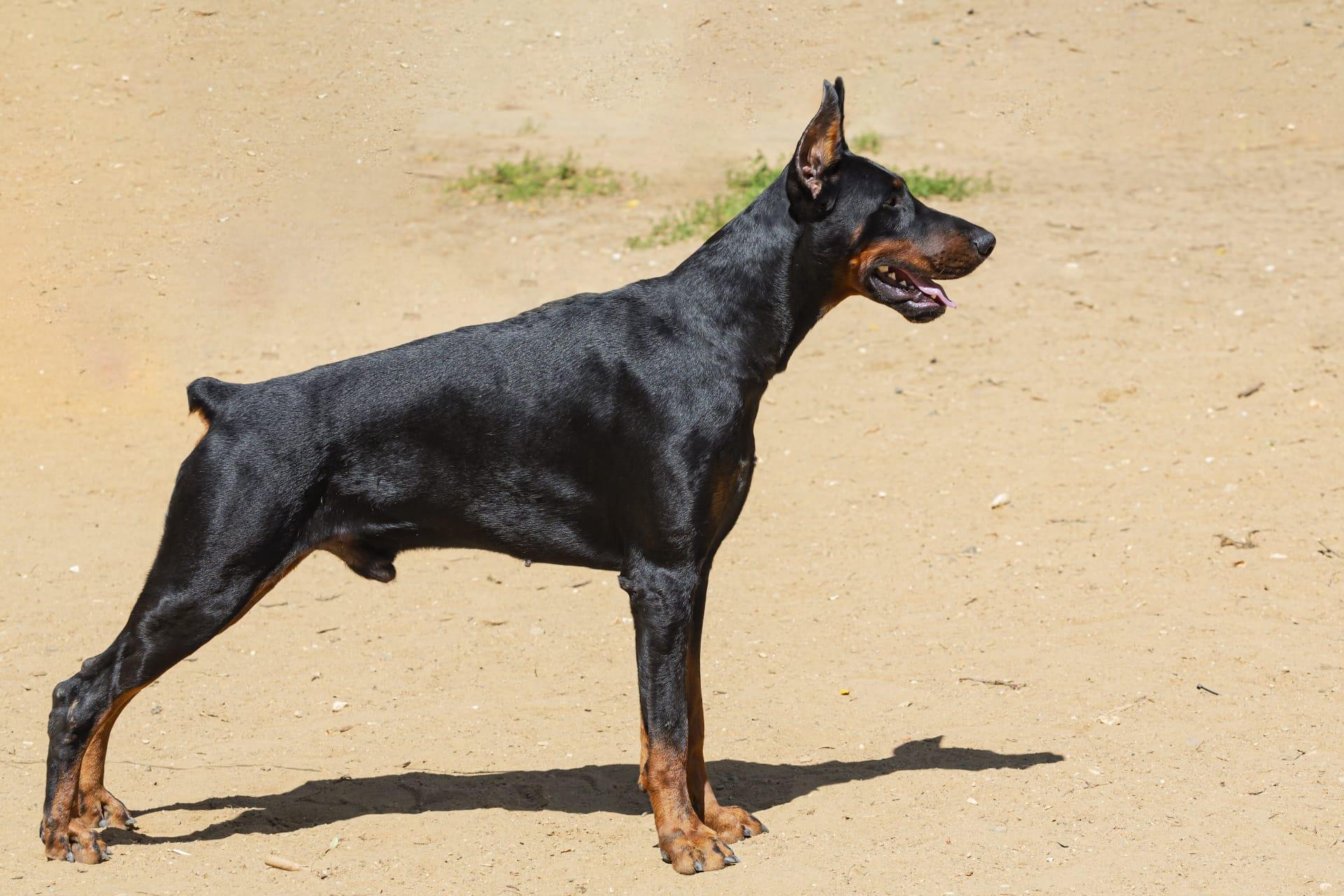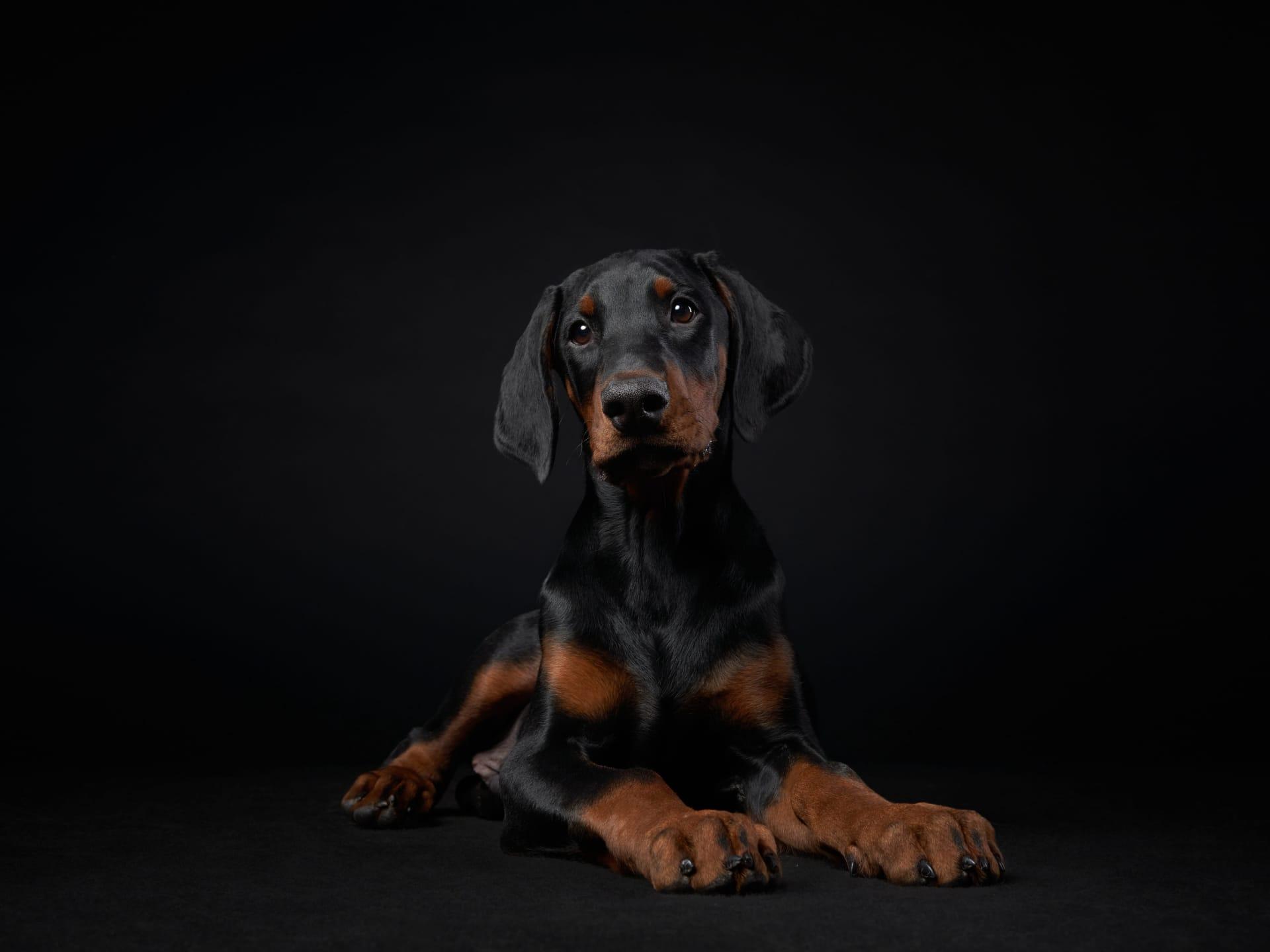1
Dobermans, known for their sleek coat and athletic build, were first bred by a German tax collector named Louis Dobermann in the late 19th century. Dobermann specifically designed this breed for protection during his tax collection duties, blending traits from various breeds like the Rottweiler, Weimaraner, and German Pinscher to create a dog that was both alert and loyal. This meticulous breeding resulted in a dog with a muscular frame, standing about 24 to 28 inches tall at the shoulder, and weighing between 60 to 100 pounds, making them formidable guardians yet remarkably agile.
Interestingly, Dobermans have a unique ability to smile. This is not a mere anthropomorphic projection by their human companions; it's a specific facial expression they exhibit when happy or content, involving pulling back their lips and showing their teeth in what resembles a grin. This "smile" is often accompanied by a wagging tail and relaxed body posture, signaling their friendly intentions despite their fearsome reputation. It's a fascinating display of the breed's complexity, blending their protective instincts with their deep loyalty and affection for their human families.

2
The intelligence of a Doberman is not just anecdotal; it's a scientifically acknowledged fact. Ranked as the fifth most intelligent dog breed in the world by psychologist Stanley Coren, Dobermans are capable of learning new commands in less than five repetitions and obeying the first command more than 95% of the time. This high level of intelligence, combined with their natural inclination to please their owners, makes them excellent at obedience training and suited for complex tasks such as search and rescue operations or therapy work.
Dobermans also possess a remarkable physical feature known as "Doberman pinscher myopathy" or "dancing Doberman disease," which affects their ability to stand and walk. This condition, specific to the breed, usually manifests between the ages of 6 to 7 years and can cause affected dogs to shift weight between their hind legs or even stand on their hind legs alone, giving the appearance of dancing. Despite this challenge, many Dobermans with the condition continue to lead happy and active lives, showcasing their resilience and adaptability.

3
The coat of a Doberman is not just for show; it plays a significant role in their adaptability to various climates. Their short, sleek fur, which comes in colors like black, red, blue, and fawn, is coupled with an undercoat around the neck that provides insulation. This dual-layered coat system allows Dobermans to stay warm in cooler climates while also being able to tolerate moderate heat, thanks to their ability to shed the undercoat during warmer months. This adaptability makes them suitable companions for a wide range of geographic locations.
Dobermans have a unique place in cinematic history, often portrayed as the quintessential guard dog in films and television. This stereotype stems from their imposing presence and protective instincts, making them a popular choice for roles that require a dog with an authoritative demeanor. However, this representation overlooks their gentle and loyal nature, qualities that have endeared them to many as family pets. Their versatility in both protection and companionship roles speaks to the breed's complex character, transcending their Hollywood typecast.

4
The lifespan of a Doberman pinscher, typically ranging from 10 to 13 years, is influenced by their health and lifestyle. Factors such as diet, exercise, and genetic predispositions play significant roles in their longevity. Dobermans are prone to certain health conditions like dilated cardiomyopathy (a heart condition) and von Willebrand's disease (a bleeding disorder), but with proper care, regular veterinary check-ups, and a healthy lifestyle, many Dobermans live full and active lives well into their senior years.
Despite their reputation as fierce protectors, Dobermans are known to form deep emotional connections with their families. They are often described as "velcro dogs" due to their tendency to stick close to their owners, seeking constant physical contact and affection. This behavior highlights their need for companionship and their suitability as family pets, contrary to the misconception that they are solely working dogs. Their loyalty and affectionate nature make them not just protectors but also beloved members of the households they reside in.

5
Dobermans have an impressive speed, capable of reaching up to 30 miles per hour (about 48 kilometers per hour) when running. This agility, combined with their muscular build, makes them exceptional athletes in dog sports such as agility trials, tracking, and obedience competitions. Their speed and endurance also make them excellent jogging or biking companions for active owners, providing both the dog and the owner with beneficial exercise and bonding time.
The breed's name, often misspelled as "Doberman Pinscher," reflects its origin but also a common misconception. The term "Pinscher" in German refers to dogs bred for catching vermin, akin to terriers. However, the Doberman's breeding was primarily focused on creating a loyal and protective companion, not a vermin hunter. This distinction highlights the breed's purpose as a guardian and companion from its inception, designed with traits that prioritize intelligence, loyalty, and physical prowess over the typical terrier-like hunting abilities.